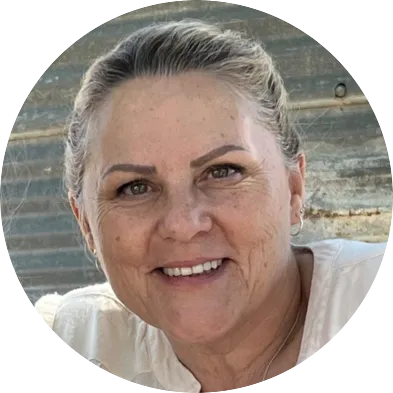‘More of the same’ predicted for 2025 real estate market

LOVELAND — The Northern Colorado landscape is changing dramatically, and in the next decade, the entire market will shift east with more people, more housing and jobs. But if you are looking for a crystal ball in the Northern Colorado housing market, all you need is the Boulder Benchmark, said Brandon Wells, president and CEO of The Group Inc. Real Estate, which presented its 2025 Real Estate Forecast on Wednesday.
The so-called benchmark is the same home that was built in three different markets in the 1950s. Every year, The Group tracks the sales of those homes, which has become a prime indicator of how the Northern Colorado real estate market is performing.
“It has proven to be an amazing benchmark to see what happens in each major market,” Wells told the massive crowd at the Embassy Suites in Loveland.
SPONSORED CONTENT
The formula is simple. That one house, about 2,000 square feet, is located in Boulder, Fort Collins and Greeley.
Last year, that house sold:
- In Greeley for $377,500.
- In Fort Collins, for $570,000.
- In Boulder, for $983,425.
If you want to know what will happen in Fort Collins in 10 years, he said, see Boulder’s sales price today; if you want to know what will happen in Greeley, which is typically eight years behind Fort Collins, see that sales price.
Housing prices are creeping up all the time, as all three markets are experiencing significant price appreciation. In Greeley, for example, the average annual appreciation is 5% — nothing new for the market, but staying on trend after a few years of volatility. The annual average price appreciation in the Loveland/Fort Collins market was 5.7%.
More telling is the median residential single-family housing price in Greeley, which grew 6.93% to $429,209 in 2024, eclipsing Fort Collins’ median sales price growth of 0.63% to $624,000, and Loveland’s growth of 1.94% to $535,000. So while other market prices are growing slower, Greeley prices, while still much lower, are beginning to catch up to the big players in the market.
Wells said these markets should remain the same in 2025.
While housing in Northern Colorado is going to continue to do well, The Group also sees all the growth centered in the east in Weld County, where there’s more land and more water, which are being gobbled up fast for residential purposes up and down Interstate 25 from Buc-ee’s on north.
“We’ve seen Greeley continue to have pro-growth strategies, and west Greeley is certainly seeing a lot of expansion on the U.S. 34 corridor,” Wells said. “That 34 corridor will continue to look a lot different over the next 10 years. In the next two years, look for Weld County’s population to surpass Larimer County for the first time. Weld wages have already surpassed Larimer, he said.
That is also a reason why The Group is opening a new office, at 1829 56th Ave., in west Greeley, Wells said. The Group’s new 2,600-square-foot Greeley office will be it’s ninth in Colorado, according to a news release.
Buyers today are different, Wells said.
“The other thing supporting demand is the millennial generation,” Wells said. “We have a decade of demand; the medium first-time home buying age is 38 years old, and that continues to get moved up to older brackets.
“When you look at this, millennials make up the largest portion of buyers in the U.S., and they are Colorado’s strongest and largest. As we see relief in rates, we’ll see purchases coming out of that generation.”
While we have a new generation, we also have more cash purchases, which in those cases is making continued high interest rates moot. Rates may continue to be in the 6% range through 2025, however, said Jason Peifer, branch manager of Group Mortgage LLC.
But there are other pressures on the market. Wells said Realtors and home buyers need to pay attention to insurance, as the last two years have hit the industry hard with natural disasters, from wildfires in Colorado and California to hurricanes in Florida to hailstorms along Hail Alley. After the Marshall Fire in 2021, there were 5,000 claims filed, and 74% of homeowners were underinsured; and 36% were severely under-insured which meant they had less than a 75% replacement value.
“Insurance providers are looking at our state differently, and their response is not only locally but nationally because these companies service all markets,” Wells said. “They’re charging higher premiums to offset rising claims, and they’re creating additional difficulties in finding and obtaining affordable insurance. …
From 2018 to 2023, Colorado as a state saw an almost 60% increase in average homeowners’ insurance premiums, the second-highest in the nation behind Texas, “and it is expected to continue,” Wells said.
“They’re creating new standards and limiting coverage,” Wells said. “We’re seeing non-renewals. … We have seen a lot of carriers exit the state and some people not be able to find insurance for their property, and that becomes very dangerous for the homeowner.”
Wells said that he will be watching what happens with accessory dwelling units, which all communities must allow by July 1.
“We’re interested to see what the impact will be,” Wells said. “And how much utilization given the high cost of construction, and what impact will it have on rental rates and the overall value of properties.”
The Northern Colorado landscape is changing dramatically, and in the next decade, the entire market will shift east with more people, more housing and jobs. But if you are looking for a crystal ball in the Northern Colorado housing market, all you need is the Boulder Benchmark, said Brandon Wells, president and CEO of The Group Inc. Real Estate, which presented its 2025 Real Estate Forecast on Wednesday.
THIS ARTICLE IS FOR SUBSCRIBERS ONLY
Continue reading for less than $3 per week!
Get a month of award-winning local business news, trends and insights
Access award-winning content today!





